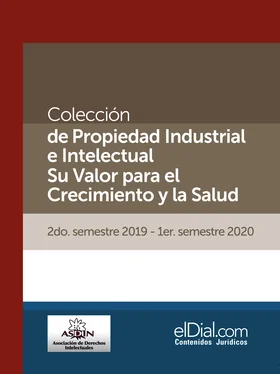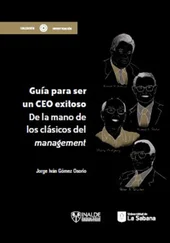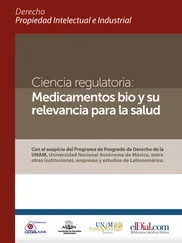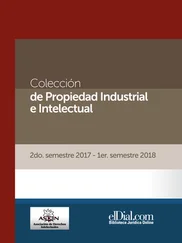To elaborate, a patent is a legal right granted by the government for a limited time in respect of a new, unobvious and useful invention. The patent grants its owner the right to exclude others from using this invention, thereby making investments in research and development (R&D) worthwhile (Adelman, et al. 2003).3 Patents are highly important in the pharmaceutical industry because vast R&D investments are required to bring a product to market, with no guaranteed return of costs.
Patent applications are usually filed at the early stages of the R&D process. These early filings are essential to precede competitors. However, the R&D company can launch the drug on the market only after regulatory approval, which may be obtained only 8-18 years after the patent filing. Accordingly, for a patent with a nominal term of 20 years from filing, the effective period of exclusive rights to a marketed product may be only 2-12 years, which is relatively short (Grubb, 1999).4
b) Theoretical perspectives
Within the legal field, the legal aspect focused on is the patent system. In marketing, the focus is on the concept of ‘product life-cycle’.
Good flexible laws are needed to overcome transaction costs and to achieve an optimal result. Patent laws utilize two possible remedies: damages and injunctions. As to damages, in order to overcome the ‘strategic behavior’ of the parties to the dispute, it is essential that the liability in damages be the same as the actual harm caused and no higher. A similar principal applies to injunctions as their breadth and conditions should be aligned with the desired optimal result for society. This result should be determined by court based on the benefit to the alleged infringer from its infringement and the harm suffered by the patentee. An optimal result will be obtained with the help of these two remedies which should be linked to the specific circumstances of the cases in order for them to obtain this result. Therefore, patent laws should be flexible and should allow the courts room to exercise their judgement in accordance with the specific information they have on a case-by-case basis.
Amongst economic theories there is ongoing tension between the ideals of free competition and the legal protection of patents (Hope, 2003a).5 The economic theories which support the patent system all stem from a basic economic theory which states that “public goods are underprovided due to the free-rider problem” (Kuchta, 2004).6 The underlying assumption of the basic theory is that inventions are easier to copy than to invent. The cost of granting a patent is the monopoly that the inventor obtains by restricting others from using his invention. However, the ‘Invention-Motivation’ theory states that this cost is justified as patents lead to a greater flow of new products to consumers, and that they encourage the progress of science, thereby eventually benefiting society.
The problem of the relatively short effective term of pharmaceutical patents is well known. Since it is in the interests of society that pharmaceutical companies continue their research activities to discover new drugs, there have been many attempts to solve this problem, i.e. extend the life-cycle of pharmaceutical products as a research incentive. During the last decade, particularly in the US, the largest pharmaceutical market has been attempting to solve the problem by filing secondary patents, particularly patents on the same active chemical ingredients.
The ‘Product Life-Cycle’ (PLC) concept is an important component of Marketing Theory. As time passes, sales increase slowly at first (introduction phase), then more quickly (growth phase), then once again more slowly (maturity and saturation phase), and finally decrease (decline phase). During the various stages (introduction, growth, maturity and decline) the product faces different challenges owing to the nature of the market, number of competitors and government regulations. In order to remain profitable, the product has to be accompanied by marketing and other strategies relevant for its position within the life-cycle stage. ‘PLC management’ is the succession of strategies used by management as a product goes through its life-cycle. These strategies may include product, pricing, sales, advertising and promotion, distribution strategies, etc.
As commented above, the economic theories argue that the patents provide an incentive to innovate and/or develop, and hence act as a fillip to the continuous supply of goods to society. Other theories such as the knowledge-management theories assert that patents lead to a disclosure of information, which in turn facilitates overall scientific progress and development. The legal theories postulate that patents facilitate the marketing of the products by providing adequate safeguards for the inventor. Sociological theories, however, do not encourage patents, especially those on research tools, as according to such theories, patents place a restriction on the free flow of scientific information, and hence hamper scientific progress.
The focus of the present research is limited to the use of secondary patents on the same active chemical ingredient as in the original drug to enhance a pharmaceutical product’s life-cycle. The open question here to be researched seems to be: to what extent do secondary patents produce the second cycle in the life-cycle of the pharmaceutical product, if at all?
c) Research paradigm and associated methodologies
I adopted the pragmatic paradigm. It views knowledge as being both construed and based on the reality of the world we experience, and it endorses practical theory which informs effective practice. Since I favoured a practical approach to this research, this was a desirable approach to apply because pragmatism does not confine itself to one system of philosophy or reality, but is more focused on the research problem itself, which I considered the most important element in my research. The pragmatic paradigm allowed me to use both qualitative and quantitative methodologies.
Additionally, a constructivist approach allowed me to draw conceptual conclusions out of the empirical evidence gathered throughout the research, to allow for the development of a theory. The constructivist researcher starts from a research question and then develops theory as the data is collected. Hence, the constructivist paradigm believes that logic flows from specific to general.
The conceptual framework of this research shows that while there is an ample theoretical base underlying the patent system, i.e. both economic and knowledge– management theories, as well as the product life-cycle concept, there is less theoretical information available on the borderline between patents and marketing, specifically on the possibility of extending the life-cycles of pharmaceutical products by filing secondary patents.
The pragmatic paradigm followed allows for the use of mixed-methodologies, i.e. both qualitative and quantitative methods. In my research I performed qualitative analysis of legal documents and of market data and supplemented this with quantitative analysis of newly constructed patent and litigation databases which surveyed a randomly selected sample from the population of interest (i.e. secondary patents).
To conclude, I used the strengths of each methodology to overcome the weaknesses of the other, and thus was able to provide stronger evidence for a conclusion through convergence and corroboration of my findings. I also used both methodologies to complement and expand each other and to add insights and understanding that might be missed when only a single methodology is used and to produce more complete knowledge necessary to inform theory and practice.
d) Findings
The first research question is:
1. In practice, to what extent do secondary inventions really mature into enforceable valid secondary patents?
Читать дальше












